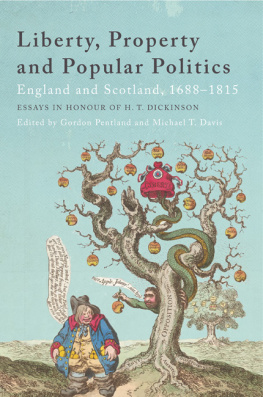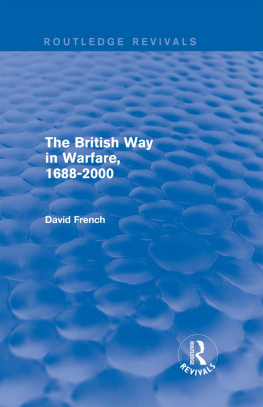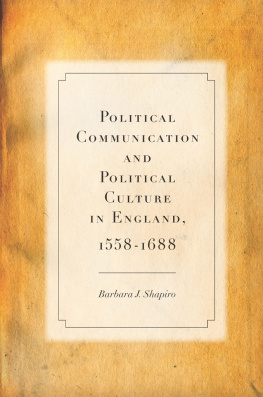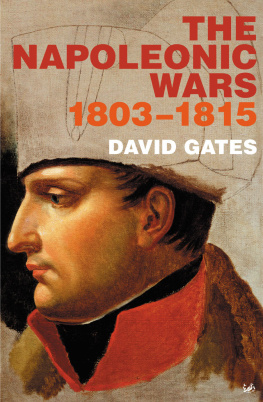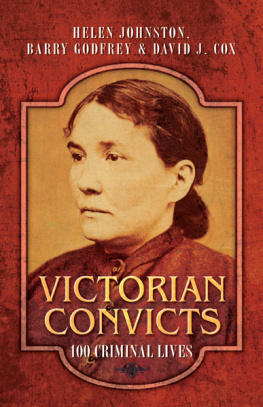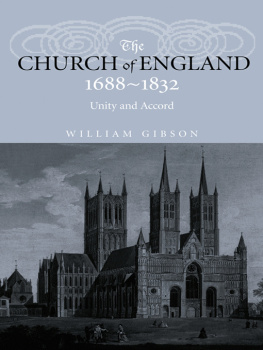Crime in England 16881815
Crime in England 16881815 covers the long eighteenth century, a period which saw huge and far-reaching changes in criminal justice history. These changes included the introduction of transportation overseas as an alternative to the death penalty, the growth of the magistracy, the birth of professional policing, increasingly harsh sentencing of those who offended against property-owners and the rapid expansion of the popular press, which fuelled debate and interest in all matters criminal. Utilising both primary and secondary source material, this book discusses a number of topics such as punishment, detection of offenders, gender and the criminal justice system and crime in contemporaneous popular culture and literature.
This book is designed for both the criminal justice history/criminology undergraduate and the general reader, with a lively and immediately approachable style. The use of carefully selected case studies is designed to show how the study of criminal justice history can be used to illuminate modern-day criminological debate and discourse. It includes a brief review of past and current literature on the topic of crime in eighteenth-century England and Wales, and also emphasises why knowledge of the history of crime and criminal justice is important to present-day criminologists. Together with its companion volumes, it will provide an invaluable aid to students of both criminal justice history and criminology.
David J. Cox is currently employed at Wolverhampton University, specialising in Criminal Justice History and Policing History. Previously, David has worked at Keele and Plymouth Universities as a Research Associate/Fellow as well as being the former Editor of The Blackcountryman, the quarterly journal of the Black Country Society. He gained a PhD in Modern History from Lancaster University in 2006.
History of Crime in the UK and Ireland
Series editor: Professor Barry Godfrey
University of Liverpool, UK
Rarely do we get the opportunity to study criminal history across the British Isles, or across such a long time period. History of Crime in the UK and Ireland is a series which provides an opportunity to contrast experiences in various geographical regions and determine how these situations changed with slow evolution or dramatic speed and with what results. It brings together data, thought, opinion and new theories from an established group of scholars that draw upon a wide range of existing and new research. Using case studies, examples from contemporary media, biographical life studies and thoughts and ideas on new historical methods, the authors construct lively debates on crime and the law, policing, prosecution and punishment. Together, this series of books builds up a rich but accessible history of crime and its control in the British Isles.
| Crime in England 16881815 |
David J. Cox |
Crime in England 16881815
David J. Cox
First published 2014
by Routledge
2 Park Square, Milton Park, Abingdon, Oxon OX14 4RN
and by Routledge
711 Third Avenue, New York, NY 10017
Routledge is an imprint of the Taylor & Francis Group, an informa business
2014 David J. Cox
The right of David J. Cox to be identified as author of this work has been asserted by him in accordance with sections 77 and 78 of the Copyright, Designs and Patents Act 1988.
All rights reserved. No part of this book may be reprinted or reproduced or utilised in any form or by any electronic, mechanical, or other means, now known or hereafter invented, including photocopying and recording, or in any information storage or retrieval system, without permission in writing from the publishers.
British Library Cataloguing in Publication Data
A catalogue record for this book is available from the British Library
Library of Congress Cataloging in Publication Data
Library of Congress Control Number: 2013949171
ISBN13: 978-0-415-50183-5 (hbk)
ISBN13: 978-0-203-08329-1 (ebk)
Dedicated to my father, Frank, and my late mother, May
This book is the result of many misspent hours in archives and record offices. I would therefore like to take this opportunity to thank all of the staff of the numerous repositories that I consulted during the researching of this book. I would particularly like to thank the staff at the National Archives, Kew, which over the past few years has begun to feel like a second home to me.
I also owe a huge debt of gratitude and appreciation to those historians and other experts whose research is frequently discussed and quoted in this book; without their often groundbreaking work in the field of policing and crime history this publication would not have been possible. Special thanks go to John Beattie and Clive Emsley, as well as to Tim Hitchcock, Robert Shoemaker and the many others that created both the Old Bailey Proceedings Online and London Lives.
I would also like to record my thanks to Barry Godfrey (series editor) and the team at Routledge, especially to Nicola Hartley, who has been very helpful and supportive.
Finally, tracing the details of crimes that took place over 200 years ago is, despite historians best efforts, not an exact science. I have been as meticulous and methodical as possible in my research, but accept responsibility for any errors or omissions that may remain.
David J. Cox, March 2013
BL | British Library |
CUP | Cambridge University Press |
IUP | Irish University Press |
LL | London Lives, 16901800 |
MUP | Manchester University Press |
OA | Ordinarys Account |
OBP | The Old Bailey Proceedings Online, 16741913 |
OU | Open University |
OUP | Oxford University Press |
PP | Parliamentary Papers |
PUP | Princeton University Press |
TNA | The National Archives |
VCH | Victoria County History |
YUP | Yale University Press |
During the period covered by this book criminal cases were first brought before one or more justices of the peace (JP) or magistrates the terms are interchangeable at Petty Sessions courts, which were held as and when the need arose and which were usually convened at a local community venue such as a public house, or occasionally at a magistrates home. For more serious cases, magistrates (who were all male women were not allowed to sit as magistrates until 1919) could send the case up to Quarter Sessions, which, as their name implies, were held every quarter (January, April, July and October), usually in the county town. These were presided over by county magistrates and further differed from Petty Sessions in that presented cases were heard first before a Grand Jury (a body of influential propertied men who decided if a case should proceed to trial a system that also applied to the higher court of Assizes and which was not abolished until 1933), and then before a jury of twelve selected men (it was not until 1919 that women were given limited rights to sit on juries).1 In cases where the magistrates felt that they were unqualified to deal with the complex or serious nature of a crime (such as murder) defendants could be imprisoned for an often considerable period to await trial at the next County Assizes, which were presided over by State-appointed judges and which normally took place twice a year, usually in the county town, at Lent (March/April) and Trinity or Summer (July/August). Londons equivalent to the Assizes was the Old Bailey. A third Assize court the Winter Assizes could also be held if warranted by pressure of number of cases waiting to be tried in any particular year. The system of Petty Sessions, Quarter Sessions and Assizes was finally swept away by the passing of the Courts Act 1971 (19 & 20 Eliz. II c.23), which replaced the old system with Magistrates Courts (which deal with petty offences) and the Crown Court (which hears more serious criminal cases).



